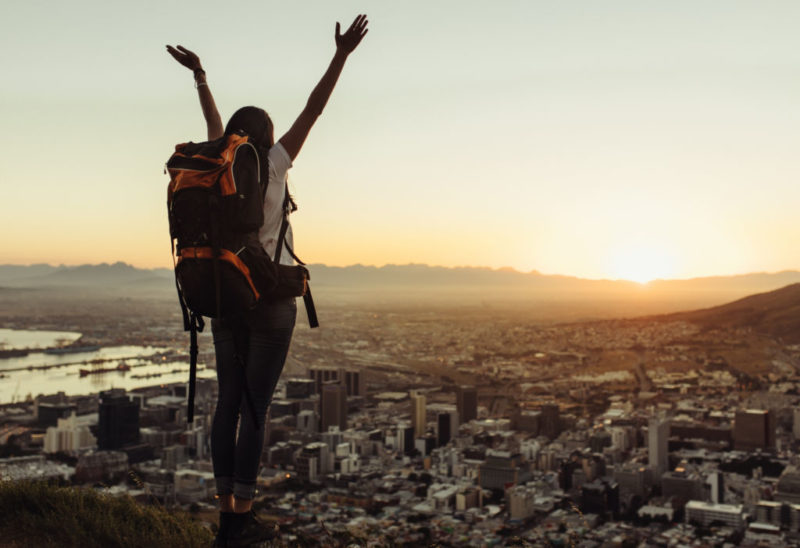Colombia. For a person who has never been here, this country evokes many associations, and all of them are negative.
Immediately, images from the Narco TV series pop up, where the ubiquitous drug cartels rule the show, and the streets are full of suspicious types offering drugs at every turn.
For me personally, the only negative point associated with Colombia is the visa. Two years ago, we already had an attempt to come here, but at the stage of submitting documents, we abandoned this idea. This time, they were more persistent – as a result, a consulate in Quito, $ 130, a huge pile of documents and a week of wasted time. And we are proud holders of a Colombian visa. By the way, this is for a Ukrainian passport. Russian – free at the border.
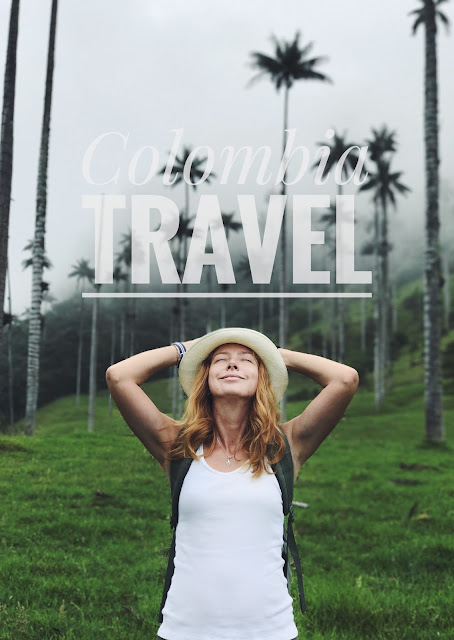
Otherwise, Colombia has something to surprise you. We spent a month in this country. And I decided to highlight 10 places, things, dishes that you should definitely visit, try, do.
And at the end she wrote down the budget, how much does it all cost.
Shall we start?
What to see and do in Colombia?
Take pictures of the most original graffiti on the streets of Bogota.
Bogotá is very often bypassed and considered only as a forced transit. But I definitely like it here. You know, there are cities with their own face and character. And Bogotá is one of them. The areas here are so different, as if you find yourself in other universes. We live in a very cool area of Chapinero, right next to Zona G (G is of course a gourmet)
There are restaurants, coffee shops, galleries on every corner.
- Croissants and breakfast at Masa is just the first thing you should do upon arrival.
- If you want to chic, it’s better to live in one of the best designer hotels in Colombia – BOG
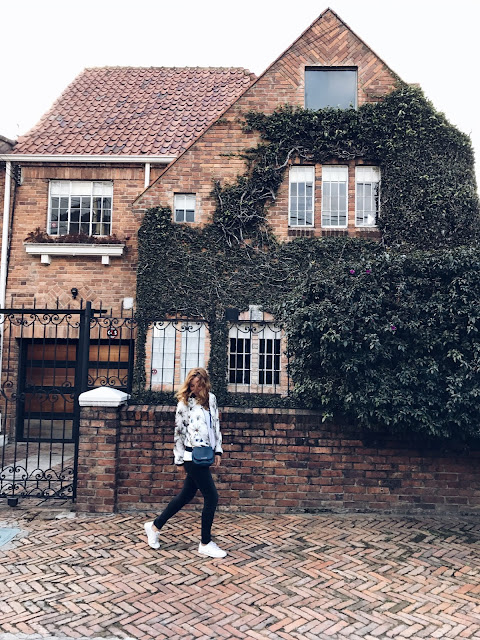
One day we went to the historic center – La Candelaria, 20 minutes and a couple of dollars in a taxi. They say that it is not very suitable for life, but taking a walk during the day is just right.
So, how to entertain yourself in Bogota?
- We started the day as real people of Bogotá – with hot chocolate, cheese, fresh bread. Cheese must be dipped in chocolate, by the way.
- Then we ran in search of the coolest graffiti – in Bogota, the guys conduct such graffiti tours for everyone, you just need to sign up on their website.
- We went to the Fernando Botero Museum. I think this is the most famous Colombian artist. By the way, a very worthy museum. Recommend. Then we got to the exhibition of the French photographer Henri Cartier-Bresson. In general, we have fully cultivated.
- For lunch we had the most famous Colombian soup – ajiaco. Potato soup with chicken, corn, avocado and a million more ingredients. We tried it in a place that is more than a hundred years old – in La Puenta Falsa, they have been preparing ajiaco since 1816.
- And then they walked for a long, long time along the old streets and chased pigeons in the central square of Bolivar.
- There are also plans to take the funicular to Montserrat and see the city from above.
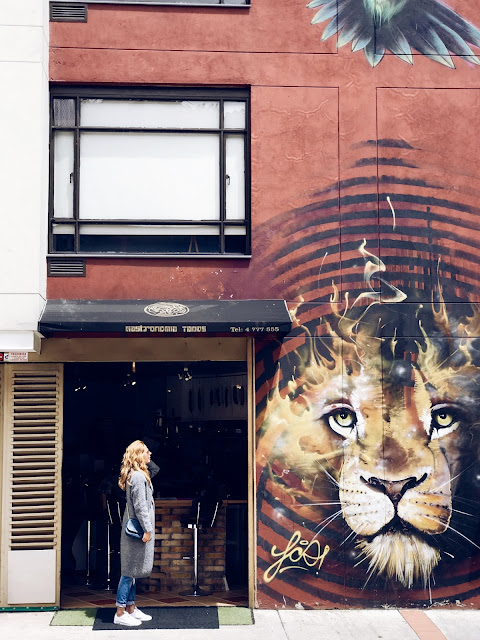
Meet the sunrise in the Wax Valley in Salento. Valley de Cocora
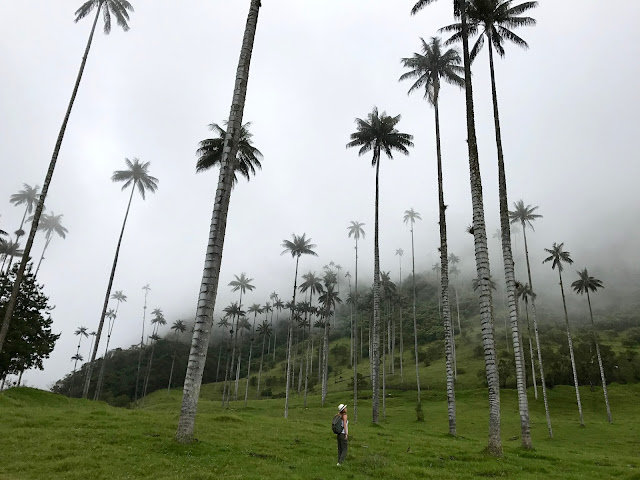
The tiny town of Salento in the heart of Colombia’s coffee region. The colors are off the charts here. Near each house I want to stop, take pictures and stay and live.
What to do in Salento besides photographing each colored house?
Of course, it is definitely worth a trip to the valley of wax palms. Just a couple of kilometers in a funny jeep – and you are in another world.
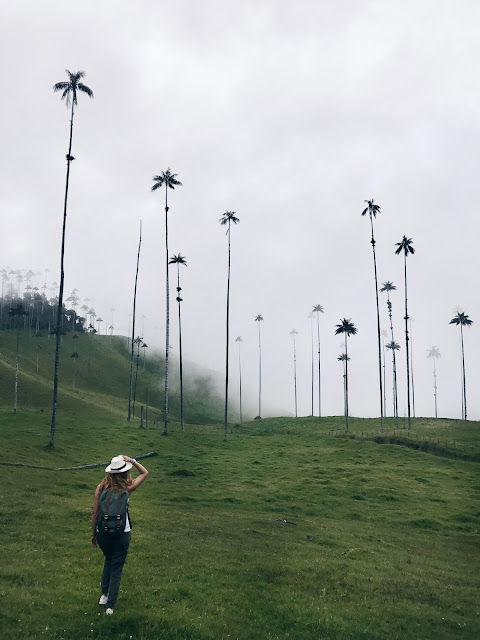
If you want to wander thoughtfully between the palm trees in the city alone, you need to start early, at least at seven in the morning. Because then you will just wade through the crowds of Colombians, especially if you find yourself on weekends or holidays.
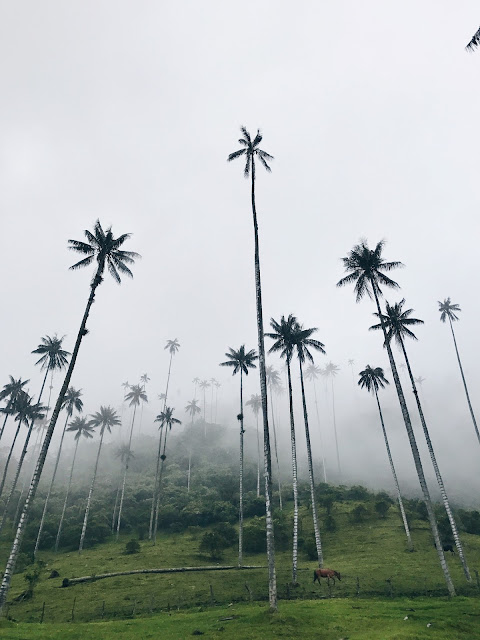
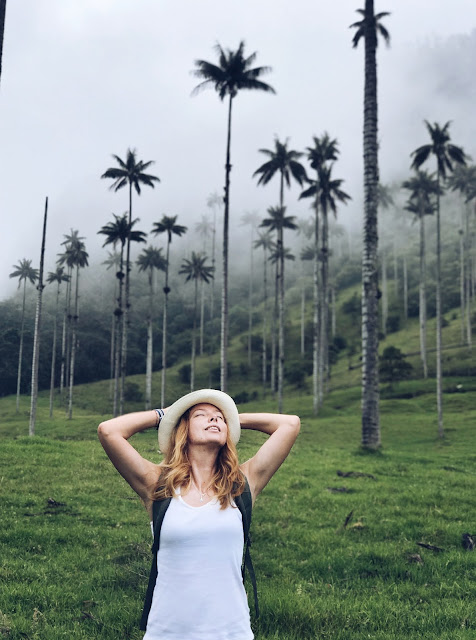
Master a new profession – picking coffee on a coffee plantation.
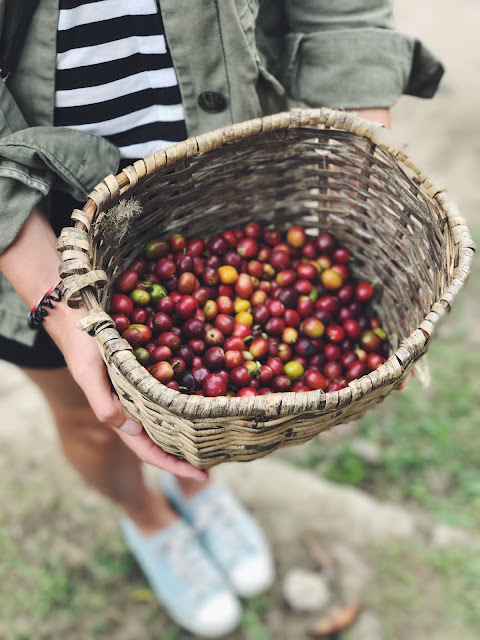
A hike to one of the “coffee finca” (a kind of summer cottages where coffee is grown) in the vicinity of Salento is just a must do.
What we just didn’t do – picked coffee berries, tasted them, tried to catch the difference between varieties (for example, what is the difference between yellow and red berries), participated in all processes – from cleaning the beans to roasting. Of course, at the end we tasted a cup of aromatic coffee. All coffee lovers are highly recommended.
We went to El Ocasa Salento and were very pleased.
Do you know which countries are the largest coffee producers?
1. Brazil
2. Vietnam
3. Colombia
4. Indonesia
And they share 75% of the market.
Arabica is grown in Colombia, at altitudes from 1600 to 2000 m. And coffee berries (not grains, but the pulp) are sweet here!
Try the trout in a creamy sauce.
Oh, how much is there. Trout is cooked in Salento in a very unusual way – today it was eaten in a creamy sauce with shrimps and mushrooms. And yesterday – in cheese and garlic sauce.
And both times it was delicious.
“ Going to the bottom” in Medellin.
Preferably in El Poblado area.
What? Come to the most dangerous city in the world and just relax? That’s right.
And also watch the series “Narcos” and once again see how everything has changed in Colombia over the past ten years.
We flew to Medellin planning to stay for two nights. But everyone changed and bought new tickets to stay longer.
If you have already watched the Narcos series, then you know that it was here that everything happened – the birthplace of Pablo Escobar, the birth of one of the most famous drug cartels, brutal bloodshed and military clashes. Surprisingly, now almost nothing reminds of this.
The city of eternal spring. Our El Poblado area is a kind of expat paradise. Stylish hotels, coffee shops, boutiques of local designers, the whole area is buried in greenery, in the center of the area – almost a mountain river flows. Today we drank coffee and it felt like they teleported to Bali.
By the way, write down:
- It is compulsory to eat pizza at Zorba
- Have breakfast at Alma Cafe
Walk around Commune 13 in Medellin.
Medellin is the only city in Colombia with a metro. And the cable car as a form of public transport.
All this appeared in the city not so long ago and became, in a way, a symbol of the rebirth and transformation of Medellin. The cable car, for example, connected the most remote slum areas with the center, making it possible for their residents to get to the main city in 20 minutes, and not spend three hours on the road.
A system of free escalators was built to one of the most disadvantaged areas, Commune 13, saving people from having to climb 300-400 steps daily.
It was Commune 13 that was not so long ago the center of the drug trade and a black hole where everything and everything disappeared, a place that you can bypass by the tenth road.
Of course, we could not help but look into Commune 13 and take a ride on the famous escalators.
Now the area has changed. Houses are decorated with graffiti, there are curious tourists with cameras around, children go down the escalators to school, you can easily drive them to the “big world” for groceries.
People, by the way, are very friendly, everyone smiles, shows the way if you suddenly stopped for a minute in indecision.
We also managed to look at the city from the height of the cable car cabins. And walk around the square where Botero’s sculptures are located, and look into his museum. Botero, by the way, was born in Medellin. And he gave the city a significant part of his paintings and sculptures.
In general, the city is so multifaceted. Colombia surprises.
Climb 659 steps and climb to the top of El Piñol de Guatape.
Well, we climbed to that red house on the top of the cliff.
What is it? A very famous stone in the vicinity of Medellin is El Piñol de Guatape.
659 zigzag steps lead to the observation deck, which overlooks the lakes and islets for many kilometers around. Stunning sight.
By the way, the ascent seems to be epic, but really nothing complicated – you can run upstairs in 20 minutes.
Get lost in the colorful alleys of Cartagena.
Cartagena is a port city on the Caribbean coast. It was founded by the Spaniards when they arrived here in search of “golden” cities in the jungle, for a dream called Eldorado.
And named after the Spanish Cartagena, adding Cartagena de Indians.
The city also haunted the pirates (of the Caribbean), so huge fortification walls appeared around it (which, however, did not help much in defense – and Cartagena was definitely plundered five times). For several centuries, the city played the role of one of the main ports of the New World, by the way.
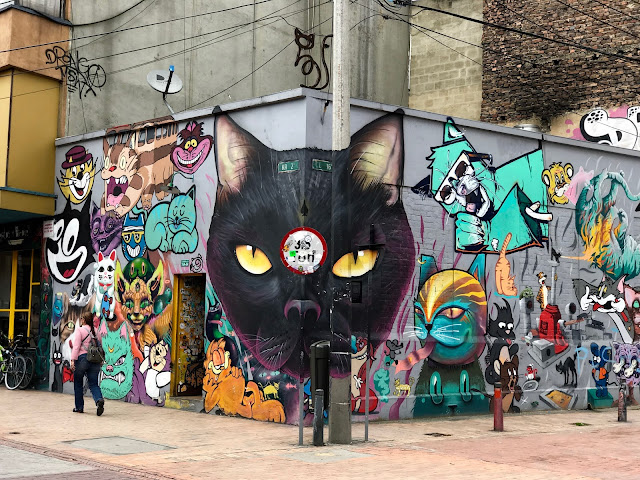
It is worth coming to Cartagena for a couple of days – walking along the colored streets, taking pictures of every house, every door, looking into all the courtyards.
Of course, in our life there were already so many colorful towns that it’s hard to surprise, but I love each one in my own way. Indian Pondicherry, Vietnamese Hoi An, Sri Lankan Galle, Malaysian Georgetown … All insanely photogenic, frozen in time.
Cities where every corner and every house keeps its own stories. I don’t want to stay in them, but I want to return, just for a couple of days – for inspiration, bright colors and the feeling of a holiday in life.
For “hotel maniacs” in Cartagena, paradise. There are so many small boutique hotels with 8-10 rooms in old mansions of the 17th century. Everything I love.
Once again I was convinced that all these star hotel chains no longer impress me. The hotel should surprise and inspire. To want to look at the details, be inspired by design ideas. And the main indicator of a cool hotel is that you don’t want to leave it.
We couldn’t stay and choose one hotel, so we have two colonial wonders for a couple of days.
Casa Lola really looks like a museum, there are so many paintings, all sorts of design details.
In the end, everything is as I described above – for half a day I photographed the details, walked around every corner, sat on all the sofas. We spent the afternoon in the rooftop pool. And only in the late afternoon we went out for a walk around Cartagena.
Escape to the deserted beaches around Tayrona.
For a couple of days from Cartagena (6 hours drive), you can come to the deserted beaches in the vicinity of Tayrona.
Deserted, beautiful Costeño beach, just a couple of hotels, kilometers of beaches and palm trees. This beach is just a couple of kilometers from Tayrona National Park.
You can come to Tyrone for a day, or you can stay overnight. There are, however, no hotels there. There are wooden houses – ecohabs, at $ 350 per day, booked a few months in advance. And hammocks with tents are for ordinary people. I don’t remember the cost, but very budgetary.
We specially settled a few kilometers from the entrance to Tyrone, so as not to spend the night in the park itself, but to go on a one-day trek.
As a result, we walked 14 km through the jungle, it seems to be not difficult, but very, just unrealistically hot. The beaches are beautiful, the jungle is very reminiscent of the Amazon, the Caribbean and the jungle – a very unusual combination.
There are only a few beaches suitable for swimming, all the rest have very strong currents and swimming is prohibited. And the people on these few beaches are just creepy.
In general, I can’t say that we are imbued with the place, to be honest. Our deserted beaches, a couple of kilometers from the park itself, Costeño beach, I liked much more.
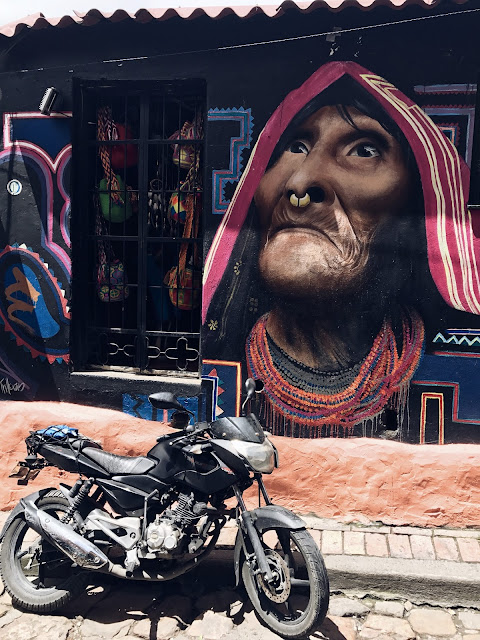
Monthly budget in Colombia.
Writing travel budgets is a thankless task, because a very large part of the costs is occupied by hotels and transport. And here everything is very individual. You can travel by bus or fly by air, live in twenty guesthouses or at the Four Seasons for $ 400 per night. Therefore, when I see any monetary distributions across the country, just the numbers can say little. The first question that arises in my head is “what hotels? And are there any flights.
And then the judgment “expensive and cheap” is formed.
In general, I’ll tell you how it was with us.
1 month in Colombia in numbers:
TRANSPORT
-9 aircraft.
Only once Ipiales-Bogota did we pay a little over $ 100 for a ticket.
Average cost of flights with baggage included is $ 60-80 per person.
-Buses $ 10-30, traveled only once on a 6-hour bus to Santa Marta.
-Taxi on average $ 5 in the city, $ 10 to the airport.
-Bike in Providencia $ 20 per day (in Bali $ 50 per month)
HOTELS: on average $ 60 per day
In Bogota, Medellin for this money you have a normal 3-4 * hotel.
In Bogota, in general, there is a very good price-quality ratio. For $ 60 Discount Sheraton. And for $ 100-150 you can afford the most fashionable hotels like BOG, W Hotel, Sofitel. Our apartment in Medellin cost $ 60, and the Diez Medellín 5 * hotel – $ 50.
In Cartagena for $ 50, very average rooms with no pretensions – more like guesthouses in Asia for twenty.
-For 120-150 $ already good boutique hotels, like our Casa Lola and Casa Coliseo.
-If you want something really cool, then it’s $ 300. All the coolest hotels in Cartagena are in this price range. Casa san Augustin, Sofitel Legend the best
On the islands of Providencia and San Andres – sadness. For $ 50-60 – an ugly guesthouse with cold water.
For $ 150 – mid-range hotels without complaints.
For $ 200-300 there are boutique hotels, of which there are already one on each island. Deep Blue and Casa Harb are the best.
Food: average bill for two $ 20-30
-Breakfast in a cool coffee shop for girls with traditional eggs Benedict and coffee is almost always $ 10 – In a good restaurant a dish on average $ 7-10
– Fancy restaurants of star chefs – about $ 20 per dish – With food, everything is relative – you can eat at local eateries much cheaper or order three dishes, wine and dessert in fancy restaurants, which will be much more expensive.
I think our budget for Colombia is average – not for backpackers, but not luxury either.

